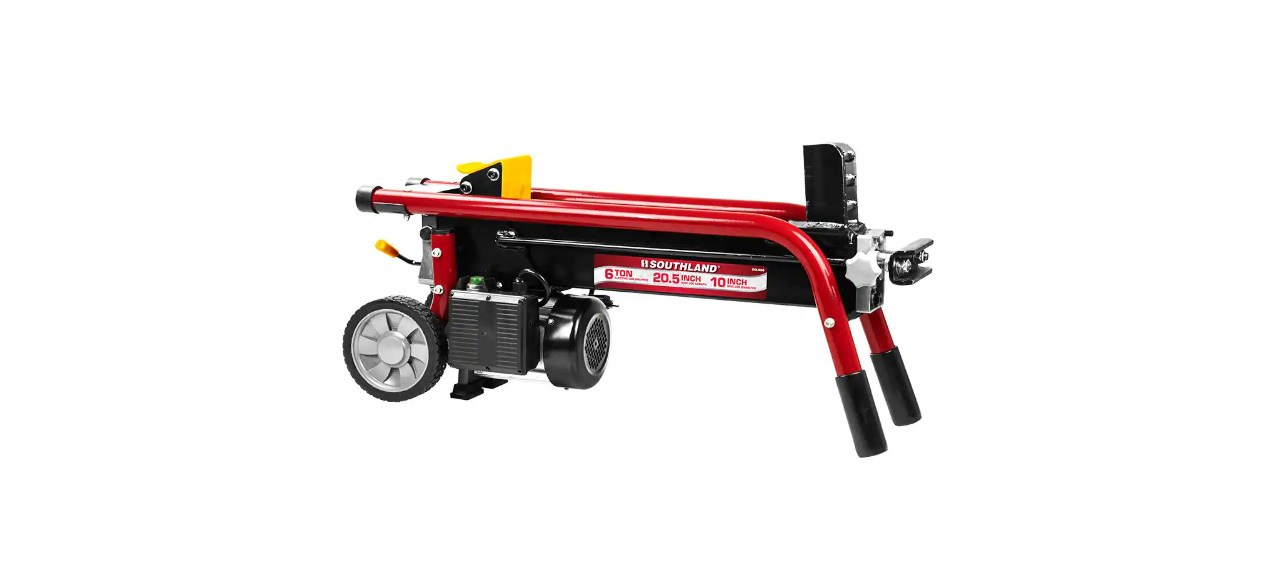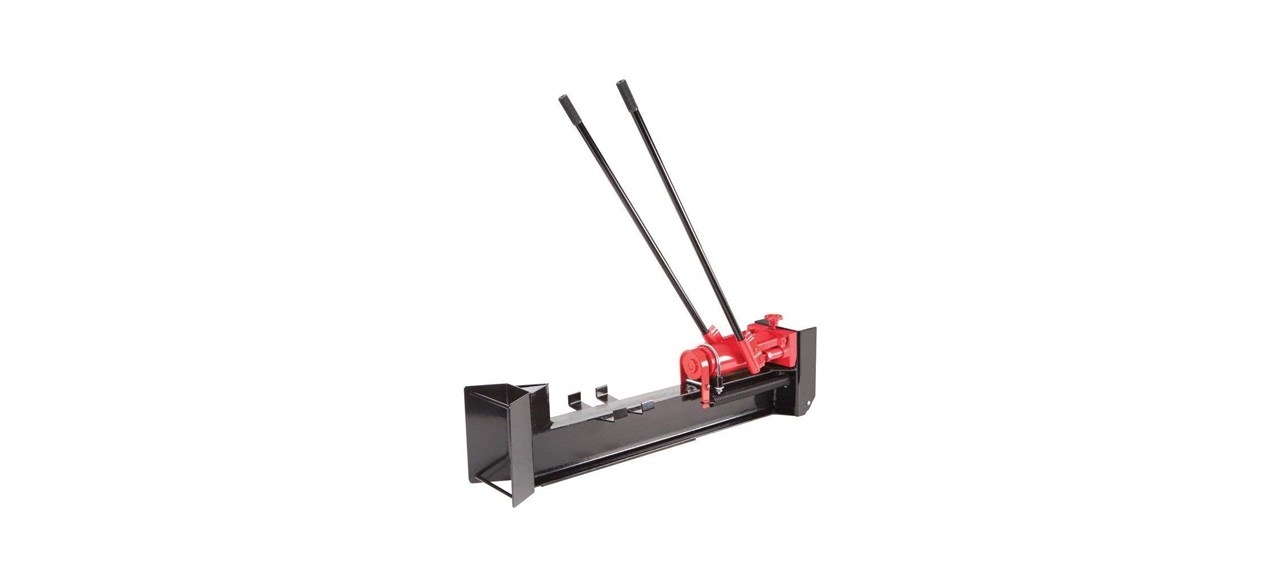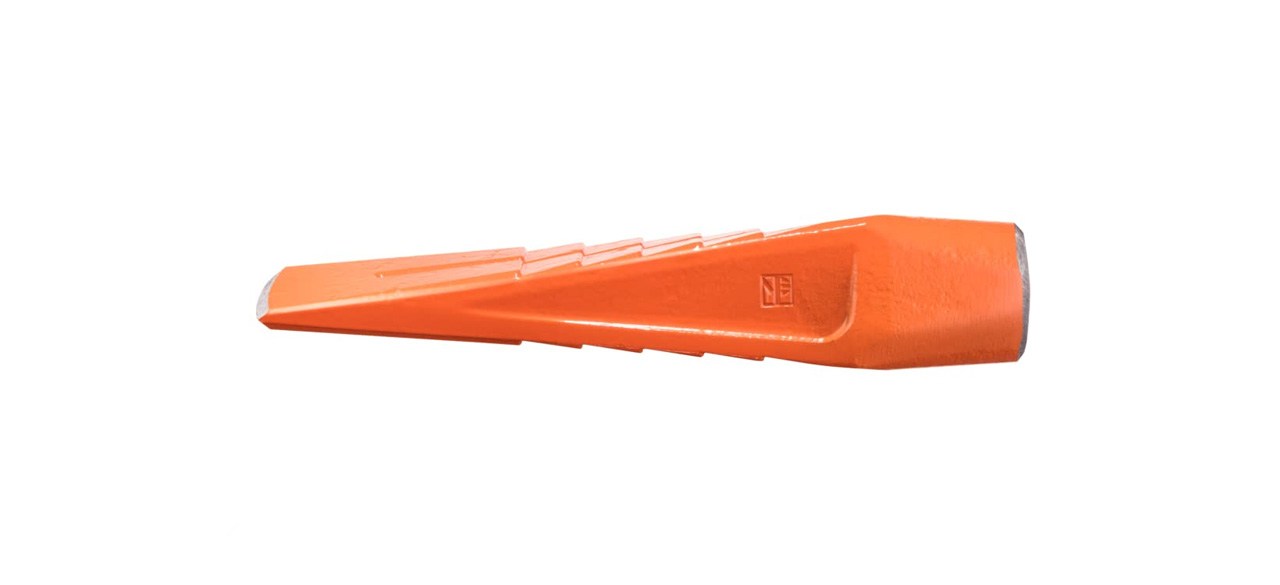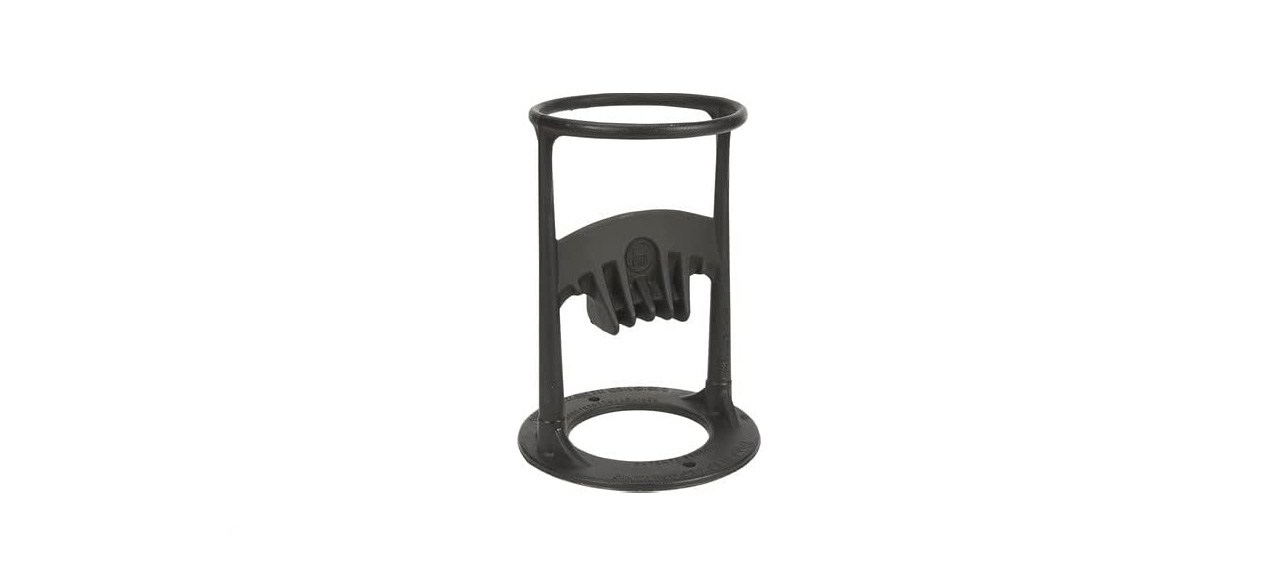Which type of log splitter is best?
Using tools to break down wood for heat and cooking is one of civilization’s oldest tasks, and there are a variety of tools available to make it easier. Depending on how much wood you have, how thick and dense it is and how much work you’re willing to do, either a manual or electric log splitter might be best for you.
Shop this article: Southland SELS60 6-Ton 15-Amp Log Splitter, Estwing Sure Split Wedge and Halder Splitting Wedge
Electric log splitters
Electric log splitters are perfect for landowners or landscapers who regularly deal with large amounts of timber and don’t want to engage in backbreaking labor. They use an electric motor that plugs into a standard 110-volt outlet and drives a powerful hydraulic pump. You simply place the log in the splitter, turn it on and let the machine do the work.
Electric log splitter pros
- Straightforward operation: Electric log splitters are pretty simple to use. They don’t have much of a learning curve and there aren’t any complicated controls to worry about.
- They’ll save your back: If you’ve recently cleared your land of any trees and have plenty of timber, an electric log splitter can help you process it without overexerting yourself.
- They can split dense logs: Electric log splitters can typically accommodate logs up to 10 inches wide and 12 inches long, although some larger models can handle even larger pieces.
- They don’t make much noise: They’re not silent, but they’re exponentially quieter than their gas-powered counterparts.
Electric log splitter cons
- Power tools can be dangerous: Always exercise extreme caution when using an electric log splitter. Never allow an untrained user to operate it and always wear appropriate protective equipment.
- They’re not cheap: Electric log splitters start around $300 and go up to around $600.
- They take up a decent amount of space: You’ll need to make sure you have somewhere to store one. They’re also heavy.
- You might still need manual splitting tools: Electric log splitters can only handle logs up to a certain size. If you’re dealing with trees more than 10 inches in diameter, you’ll have to break down the timber before you can fit it in the splitter.
Best electric log splitter
Southland SELS60 6-Ton 15-Amp Log Splitter
This one’s about as affordable as they get, but it still doesn’t make any sacrifices in terms of power. It’s equipped with rugged wheels and a textured handle so it’s easy to move around your property.
Sold by Amazon
Manual log splitters
Unlike electric log splitters, manual log splitters come in a few different types. The most traditional manual log splitter is the combination of a maul or sledgehammer and a wedge. There are also hydraulic splitters that work similarly to electric models but use long handles and your own elbow grease for power. Finally, there’s also a large number of fixed vertical wedges to choose from. These are mostly used for turning previously split logs into tinder and kindling using a small mallet or mini sledgehammer.
Manual log splitter pros
- Splitting wood by hand can be satisfying: There’s nothing like warming yourself up by splitting wood outdoors on a cold winter’s day.
- They don’t require electricity: If you’re working deep in the woods or anywhere else off-grid, a manual wood splitter might be your best bet.
- They can be affordable: You can get your hands on a good maul and splitting wedge for well under $100.
- Some designs offer increased leverage: There aren’t many, but a few of the top manual splitters work a lot like electric models, except they’re powered by hand.
- The right tools can tackle the biggest logs: A few well-placed swings of a maul can make short work of some of the biggest logs.
Manual log splitter cons
- Splitting wood by hand is a lot of work: Don’t let anyone romanticize it too much; splitting wood with a sledgehammer and wedge will make you sweat and deliver a solid dose of exercise. For a lot of people, manual wood splitting without any mechanical advantage is just not feasible.
- Manual log splitting can also be dangerous: An errant axe-head or sprained shoulder can put a stop to your work and ruin your day or worse. Always use caution when splitting wood.
- Hydraulic models work slowly: It takes a decent amount of time to split a log with a manual hydraulic splitter. The trade-off is that you don’t have to swing around any heavy tools.
Best manual log splitters
Central Machinery Hydraulic Log Splitter
It uses the same principle as an electric log splitter, but it’s powered by the user.
Sold by Amazon
This design has long been considered one of the most efficient at splitting logs. Plus, it doesn’t cost much.
Sold by Amazon
An impressive amount of engineering went into designing this wedge, which may be the most effective one on the market.
Sold by Amazon
Simply place an already split log on top of this fixed wedge, strike it with a mallet and gather the kindling that results.
Sold by Amazon
Should you get a manual or electric log splitter?
If you’ll be splitting a lot of wood, you’ll probably need a maul or sledgehammer and wedge no matter what. Even with electric log splitters, you’ll need to do some manual work at times.
As far as mechanical log splitters go, an electric log splitter is highly effective once the logs are prepped and ready for splitting. If you’re considering a mechanical log splitter, an electric one is probably your best bet. There are few manual hydraulic log splitters and the ones that do exist don’t work very quickly. The best situation for a manual hydraulic log splitter is if you’ll only use it occasionally and aren’t willing or able to swing an axe.
Want to shop the best products at the best prices? Check out Daily Deals from BestReviews.
Sign up here to receive the BestReviews weekly newsletter for useful advice on new products and noteworthy deals.
Chris Thomas writes for BestReviews. BestReviews has helped millions of consumers simplify their purchasing decisions, saving them time and money.
Copyright 2023 BestReviews, a Nexstar company. All rights reserved.































